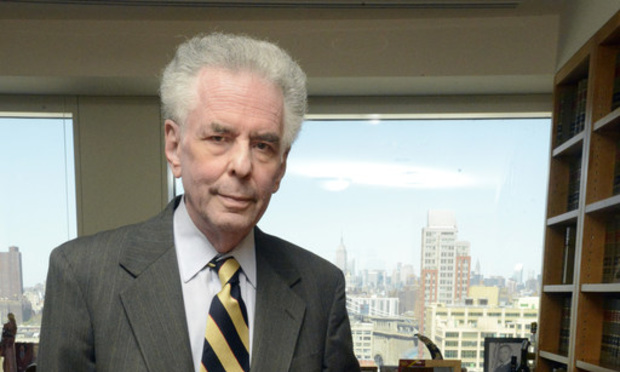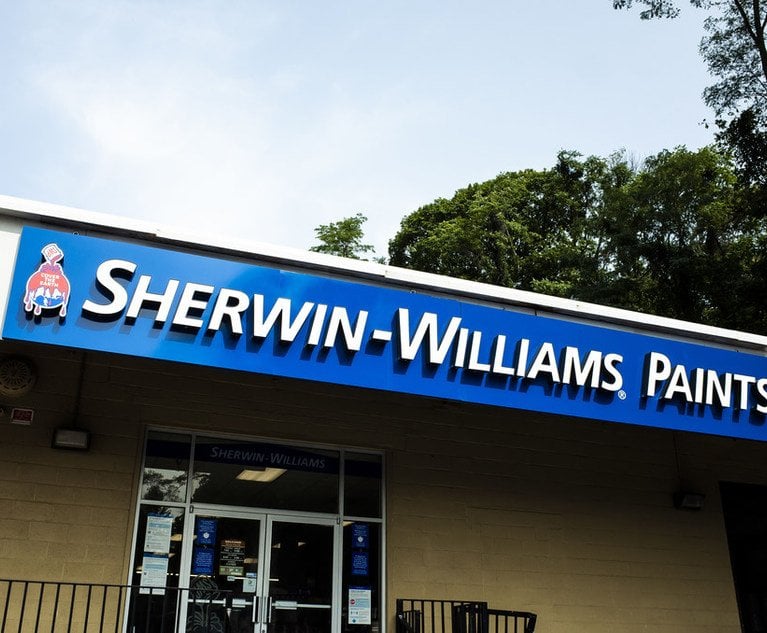9th Circuit: Our Model Trademark Instruction 'Flies in the Face of Existing Caselaw'
The appellate court granted a new trial for Herman Miller Inc. over the design of its Aeron chair, while upholding a $3.4 million award for infringement of an earlier product line.
June 25, 2020 at 07:25 PM
4 minute read
 U.S. District Judge Edward Korman. (Photo: Rohanna Mertens)
U.S. District Judge Edward Korman. (Photo: Rohanna Mertens)The U.S. Court of Appeals for the Ninth Circuit needs a new model jury instruction on trademarks and functionality.
On Thursday the appellate court reversed a jury verdict that found Herman Miller Inc.'s iconic Aeron chair unprotectable by trademark because of its functionality. The problem: U.S. District Judge John Kronstadt of the Central District of California had instructed jurors that the overall appearance of the chair could be considered functional if it is "part of the actual benefit that consumers wish to purchase when they buy the product," rather than merely signaling the identity of the designer.
"We agree with [Herman Miller] that this excerpt misstates the law," visiting U.S. District Judge Edward Korman wrote for the Ninth Circuit. Indeed, the Ninth Circuit has held that the notion "flies in the face of existing case law," Korman wrote.
It's hard to blame Kronstadt for giving the instruction. It's part of the Ninth Circuit Model Civil Jury Instructions. But that doesn't make it the law. "Because that instruction does not accurately track our functionality caselaw … its use was error and we must reverse," Korman wrote in Blumenthal Distributing v. Herman Miller.
The decision contained additional good news for Herman Miller, which has sold 6.5 million Aeron chairs since introducing them in 1994, and one positive for Blumenthal Distributing, which sells chairs under the Office Star brand.
Herman Miller accused Blumenthal of infringing the design of both its Eames chairs, introduced in 1958 and featured in the TV show "Mad Men," and the Aeron chairs. The jury found for Herman Miller on the Eames chairs, awarding $3.4 million for willful trademark infringement and $3 million for dilution of trade dress.
The Ninth Circuit affirmed the $3.4 million for infringement, again rejecting Blumenthal's arguments that the chair's appearance has utilitarian functions that make it unfit for trademarking. But the court ruled for Blumenthal on trade dress, concluding that no reasonable jury could have found the Eames chair met the Ninth Circuit's "very high standard" of achieving "household name" status among the general consuming public.
The Ninth Circuit has previously ruled that the Trek bicycle mark was not famous, despite the company spending $3 million to $5 million a year on advertising in publications like Rolling Stone magazine and Playboy and logging 4.5 million visits to its website per year.
By contrast, Herman Miller spent $550,000 a year advertising the Eames chair, it appeared only in niche publications such as Contract and Metropolis, and had at most 875,000 unique followers on Facebook, Twitter and Instagram combined.
"Because the evidence of the claimed Eames trade dresses' fame is plainly weaker than the evidence" in the Trek case, "we must hold that, as a matter of law, those trade dresses were not famous," Korman wrote. That knocked out the $3 million in trade dress damages.
Still, Foley & Lardner partner Jonathan Moskin, who argued the appeal for Herman Miller, said, "We're very happy with the outcome." He said he could not comment in further detail without approval from his client.
Lewis Roca Rothgerber Christie partner David Dillard, who represented Blumenthal Distributors, did not immediately respond to a request for comment.
Ninth Circuit Judge Andrew Hurwitz concurred in Korman's opinion.
Judge Michelle Friedland mostly concurred, but dissented from the portion overruling the jury on the fame of the Eames chair and the dilution verdict. She said the issue shouldn't be reduced to a side-by-side comparison of advertising budgets and web presences.
"The jury was entitled to find that the consuming public recognized trade dresses central to that design as a signature of chairs made by a leading furniture manufacturer, even if they could not specifically name [Herman Miller] as that manufacturer," she wrote. "Although this was not the only finding the jury could have made based on the evidence, it was a reasonable one."
This content has been archived. It is available through our partners, LexisNexis® and Bloomberg Law.
To view this content, please continue to their sites.
Not a Lexis Subscriber?
Subscribe Now
Not a Bloomberg Law Subscriber?
Subscribe Now
NOT FOR REPRINT
© 2025 ALM Global, LLC, All Rights Reserved. Request academic re-use from www.copyright.com. All other uses, submit a request to [email protected]. For more information visit Asset & Logo Licensing.
You Might Like
View All
Apple Disputes 'Efforts to Manufacture' Imaging Sensor Claims Against iPhone 15 Technology

'Be Comfortable Being Uncomfortable': Pearls of Wisdom From 2024 GC Q&As

Insurers Dodge Sherwin-Williams' Claim for $102M Lead Paint Abatement Payment, State High Court Rules

Mastercard CLO Exits After Just 14 Months, Takes Legal Reins of Laser Manufacturer
3 minute readLaw Firms Mentioned
Trending Stories
- 1'It's Not Going to Be Pretty': PayPal, Capital One Face Novel Class Actions Over 'Poaching' Commissions Owed Influencers
- 211th Circuit Rejects Trump's Emergency Request as DOJ Prepares to Release Special Counsel's Final Report
- 3Supreme Court Takes Up Challenge to ACA Task Force
- 4'Tragedy of Unspeakable Proportions:' Could Edison, DWP, Face Lawsuits Over LA Wildfires?
- 5Meta Pulls Plug on DEI Programs
Who Got The Work
Michael G. Bongiorno, Andrew Scott Dulberg and Elizabeth E. Driscoll from Wilmer Cutler Pickering Hale and Dorr have stepped in to represent Symbotic Inc., an A.I.-enabled technology platform that focuses on increasing supply chain efficiency, and other defendants in a pending shareholder derivative lawsuit. The case, filed Oct. 2 in Massachusetts District Court by the Brown Law Firm on behalf of Stephen Austen, accuses certain officers and directors of misleading investors in regard to Symbotic's potential for margin growth by failing to disclose that the company was not equipped to timely deploy its systems or manage expenses through project delays. The case, assigned to U.S. District Judge Nathaniel M. Gorton, is 1:24-cv-12522, Austen v. Cohen et al.
Who Got The Work
Edmund Polubinski and Marie Killmond of Davis Polk & Wardwell have entered appearances for data platform software development company MongoDB and other defendants in a pending shareholder derivative lawsuit. The action, filed Oct. 7 in New York Southern District Court by the Brown Law Firm, accuses the company's directors and/or officers of falsely expressing confidence in the company’s restructuring of its sales incentive plan and downplaying the severity of decreases in its upfront commitments. The case is 1:24-cv-07594, Roy v. Ittycheria et al.
Who Got The Work
Amy O. Bruchs and Kurt F. Ellison of Michael Best & Friedrich have entered appearances for Epic Systems Corp. in a pending employment discrimination lawsuit. The suit was filed Sept. 7 in Wisconsin Western District Court by Levine Eisberner LLC and Siri & Glimstad on behalf of a project manager who claims that he was wrongfully terminated after applying for a religious exemption to the defendant's COVID-19 vaccine mandate. The case, assigned to U.S. Magistrate Judge Anita Marie Boor, is 3:24-cv-00630, Secker, Nathan v. Epic Systems Corporation.
Who Got The Work
David X. Sullivan, Thomas J. Finn and Gregory A. Hall from McCarter & English have entered appearances for Sunrun Installation Services in a pending civil rights lawsuit. The complaint was filed Sept. 4 in Connecticut District Court by attorney Robert M. Berke on behalf of former employee George Edward Steins, who was arrested and charged with employing an unregistered home improvement salesperson. The complaint alleges that had Sunrun informed the Connecticut Department of Consumer Protection that the plaintiff's employment had ended in 2017 and that he no longer held Sunrun's home improvement contractor license, he would not have been hit with charges, which were dismissed in May 2024. The case, assigned to U.S. District Judge Jeffrey A. Meyer, is 3:24-cv-01423, Steins v. Sunrun, Inc. et al.
Who Got The Work
Greenberg Traurig shareholder Joshua L. Raskin has entered an appearance for boohoo.com UK Ltd. in a pending patent infringement lawsuit. The suit, filed Sept. 3 in Texas Eastern District Court by Rozier Hardt McDonough on behalf of Alto Dynamics, asserts five patents related to an online shopping platform. The case, assigned to U.S. District Judge Rodney Gilstrap, is 2:24-cv-00719, Alto Dynamics, LLC v. boohoo.com UK Limited.
Featured Firms
Law Offices of Gary Martin Hays & Associates, P.C.
(470) 294-1674
Law Offices of Mark E. Salomone
(857) 444-6468
Smith & Hassler
(713) 739-1250






